REVIEW: Cyberpunk 2077 (2020)
The most anticipated game in recent memory has finally launched, and, sadly, it was a rough launch indeed. I’m not going to sugarcoat it; Cyberpunk 2077 launched before it was ready, and not just the horrendous console ports – even the PC version has a fair amount of problems, which likely could have been fixed with more time in the oven. Some of these issues include odd omissions, like the inability to map certain key commands; I use the E key as my action button in nearly every game, so it took my brain a lot of time to get used to hitting F. Other issues are more severe and won’t easily be fixed by patches or mods, like the generally terrible NPC AI.
I am a PC gamer, and I primarily use CD Projekt’s storefront GOG. I am also an actual cyborg. I lost my right leg in 2017 and now have an assortment of real-life cyberware which let me walk, so I’ve got a personal connection to the subject matter. I’ve spent a fair amount of time reading lore, immersing myself in Mike Pondsmith’s Cyberpunk universe through the World of Cyberpunk book and the Trauma Team comic, both of which were released by Dark Horse and are well worth your time. And, most importantly, I played Cyberpunk 2077 on a high-end PC, which I built for video editing as well as gaming. So my experience was not only worlds better than what you’d be getting on a base-level PS4 but also above what the majority of other PC players would experience.
All of those factors should be considered when I say that I loved Cyberpunk 2077.
That statement is highly subjective, arguably a hot take, and certainly influenced by my bias toward CD Projekt, my connection to the material, my knowledge of the lore, and the quality of my hardware. However, I am going to be as objective and honest as I can. If you’re on a base-level console, don’t spend your money and don’t waste your time; wait for some patches at the very least, or better yet, wait until you upgrade to next-gen hardware. However, if you’re on PS5, Xbox Series, or a decent PC, that question is much more complicated, and I’m here to help you find your answer.
Premise
Cyberpunk 2077 is the latest game from Witcher developer CD Projekt Red and is their most ambitious title to date. It takes place in the world of Mike Pondsmith’s pen and paper roleplaying game Cyberpunk 2020, but unlike the way games like Baldur’s Gate adapt Dungeons & Dragons to the video game format with a degree of mechanical accuracy, Cyberpunk 2077 is a real-time action RPG, not a digital interpretation of 2020. The result is somewhere between a Deus Ex game, a Fallout game, and a Grand Theft Auto game, and this is where some people might get disoriented.
Cyberpunk 2077 doesn’t have the same amount of interactivity that a Fallout game might, where you can kill a shopkeeper because they looked at you funny, but it does have much better shooting mechanics, and you can move around the world in a variety of vehicles. However, the driving and city systems don’t stack up to games like Grand Theft Auto, and the combat is mediated by the RPG statistics much more than the GTA games are.
The result is a game that might leave people expecting a world-is-your-oyster RPG disappointed that you can’t even aim your weapon at many NPCs, and people expecting Cyberpunk GTA wondering why it takes so many shots to take enemies down and what all those silly numbers mean. Knowing what you’re getting into with Cyberpunk 2077 is important, as it is certainly a bit of a Jack of all trades, master of none. But it also manages to become more than just the sum of its parts.

Character Build
You start Cyberpunk 2077 by creating your character, the Mercenary known as V, and while the genital customization options are heads and tails above anything else in AAA gaming, the rest of the creation options are a bit limited. You can’t choose things like height or physique at all, and the number of options you have for things like hairstyles and tattoos is definitely on the low side. The former is somewhat understandable, as a character model with drastically different dimensions would likely have gameplay implications; the latter could have used more choices.
Once you’re satisfied with your V’s appearance, you choose some base attribute stats and begin your prologue chapter. There are three choices – the Corpo, the Street Kid, and the Nomad; and while these do create drastically different opening moments, they have minimal impact afterwards. You are then given life-path-specific dialogue options at certain points through the rest of the game. But they don’t seem to have any major impact beyond adding some depth to V’s personality, which isn’t nothing, but it’s not exactly game-changing.

Structure
After the life path prologue, which lasts approximately twenty minutes, there is a six-month time jump, which begins Act 1, which is effectively another prologue. This one is around 5-7 hours long, and it introduces you to the world and sets up the main story of the game. It’s only after this segment that the meat of the game and the main story begins. Act 2 is by far the longest, and it’s also where you’ll have the most flexibility. You can run through the main jobs if you like, which progress the story, but you’re also free to acquire and complete side jobs, gigs, random world events, and car collecting. The naming conventions may be a bit confusing, but the side jobs and gigs are not equivalent. Side Jobs, the side quest of Cyberpunk 2077, are meaty, story-heavy, multiphase quest lines, while gigs are, for the most part, one-off money-making opportunities.
The gigs are fine for the most part and great to pursue if you want some extra experience points or money, but the side jobs are arguably the best content in the game. I completed most of the side jobs and finished the main story on hard difficulty in 45 hours – I didn’t 100% the gigs or buy all the cars and cyberware, but I’m confident in calling my playthrough thorough, so that’s probably the approximate game time you can expect if you approach the game similarly. I’ve seen a few people surprised that 45 hours was all it took to get through the follow-up to Witcher 3, but honestly, I think the pacing was pretty spot on. There was never a time where I felt like the story was treading water or that I felt myself struggling to remember what was going on in any of the stories.
This is smartly mediated by quests, which require a character calling you back after a day or so to resume the quest line. It makes it organic to bounce between different plot threads without forgetting what’s going on in any of them. Like if, in real life, you went for coffee with someone at lunch, then made plans with that same person for the next day, and then went to hang out with some other friends that evening. It’s one of the aspects that made Night City feel like the place where V lives, rather than just an open-world map with quest icons that need to be cleared.
The game’s structure is ultimately pretty similar to Witcher 3; it’s just a bit more streamlined and works quite well. However, I did not like how the quest level recommendations worked at all. In Witcher 3, you were given specific recommended levels for each quest, so you knew which quests were out of your league, as well as which ones you’d out-leveled and could knock out easily. In Cyberpunk 2077, you’re just given a danger level which changes for each mission as you get more powerful. I felt this to be much more vague and confusing, particularly considering I’d do some high-danger quests which weren’t a problem and some moderate-danger quests which seemed flat-out impossible. This seems like the kind of thing which could be fixed by a mod. For example, my buddy Fonz threw a mod on Witcher 3 that showed multiple quest objectives on the map at once, so he could multitask – but it appears CDPR has not learned much about quest menu organization.
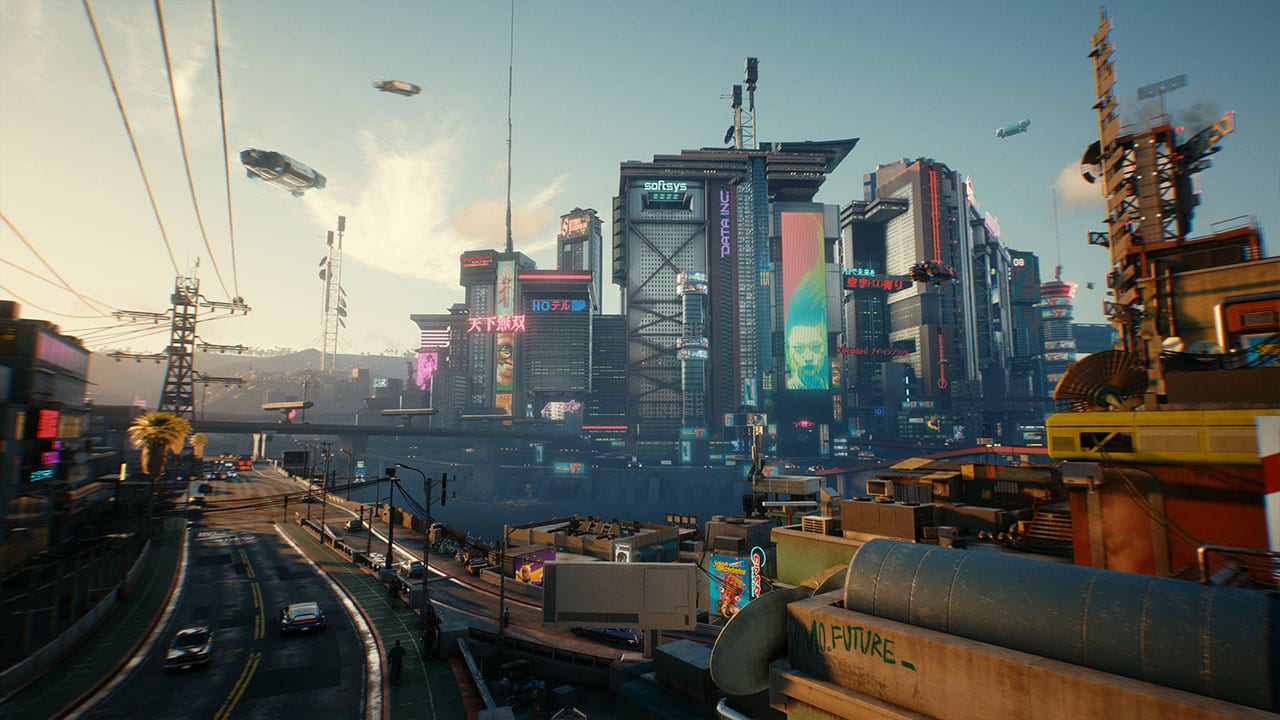
Open-World
The open-world mechanics themselves are also a bit of a mixed bag. CD Projekt touted a world where NPCs go about their lives on behavioral patterns and that Night City would feel truly alive, and this is true, if not for one very important X factor: the player. It seems like V interacting with NPCs breaks them out of AI patterns, which would be fine if they reacted in a believable manner, such as fighting back when V is ripping them out of their vehicle or driving around V if the player decides to stop their car in the middle of the road. But the NPCs in night city seem just to break unless they are possible hostiles, in which case they’ll immediately start fighting. This doesn’t destroy the game, as the non-hostile NPCs don’t factor into the gameplay beyond the vendors, but it certainly breaks immersion.
Worse still is if you commit a crime, accidentally or otherwise, because the crime and police system is, at most, half-baked. If you kill a civilian, be it with your car or a stray bullet, you will acquire a wanted star, not unlike GTA. However, unlike GTA, the police do not pull up in vehicles and chase you; they just sort of teleport in. This is flat-out cheating on the part of the game and is balanced out by the fact that cops and your wanted level seem to vanish if you run or drive 20 meters down the block. It makes it seem like the only reason there are police at all is so you can’t just go on ruthless killing sprees without the world reacting. I am happy they landed on a system that is, ultimately, not very intrusive, as it didn’t derail missions and force restarts because of a bad turn in your car or a stray bullet. But it is, at most, a tick in the box feature. It’s enough that if anyone asks, “do the cops show up if you commit a crime?” the answer is technically “yes,” but it isn’t any deeper than that.
Night City feels a whole lot more populated and alive than the Wastelands of the Bethesda Fallout games, The Outer Worlds, or, honestly, any other comparable RPG, but it’s not up to the standard of the Grand Theft Auto games. Cyberpunk 2077 is closer in genre to the former overall, but there is something about driving around a cityscape that makes you instinctively think the world will behave like a GTA; sadly, that’s not the case here.
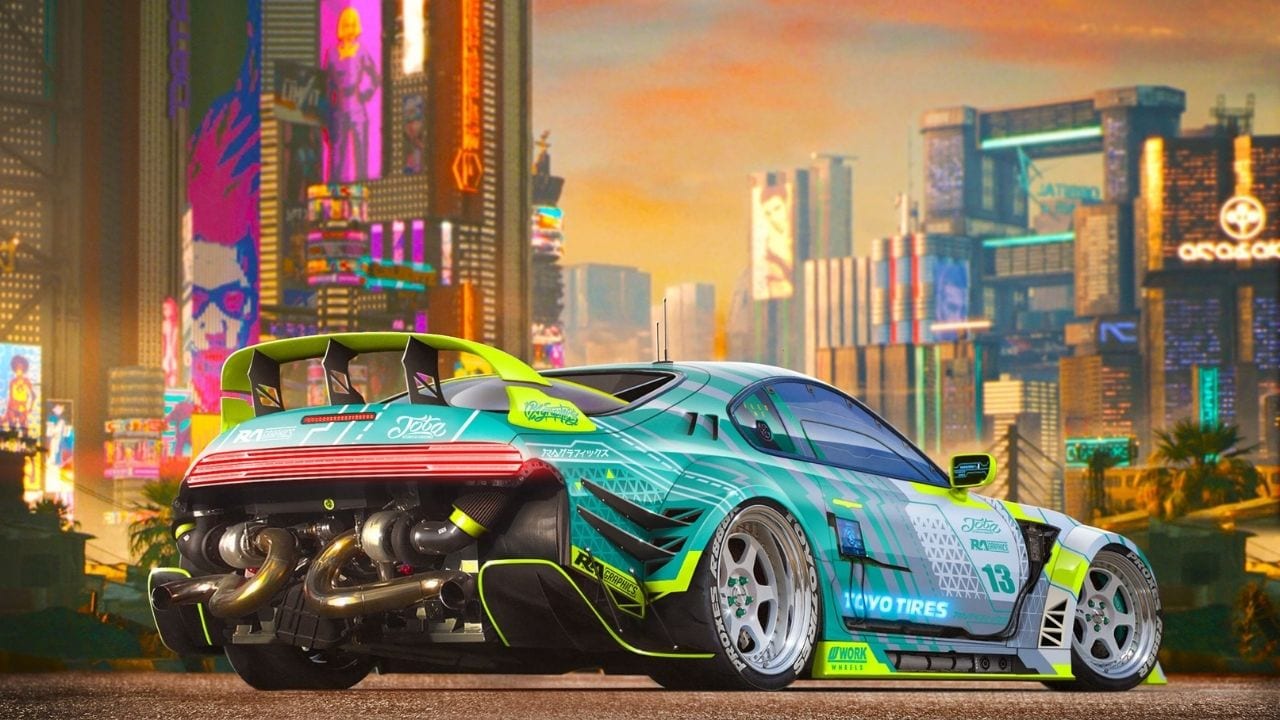
Driving
It doesn’t help that the driving physics are also on the wonky side. The most important thing to learn are that you need to slow down when going into sharp turns, which involves braking in advance because all of the cars are quite heavy. This is exacerbated by the physics on handbrake turning feeling strange, the mini-map being zoomed in too tightly, and the camera not following the car the way you’d expect. The mini-map creates a problem because, if you’re in a fast vehicle, you’ll see the next turn you have to make too late for you to slow down sufficiently. The result is that you’ll often brake too late and have to come to a sudden stop, which breaks the feel of a carefree drive through an aesthetically gorgeous Cyberpunk city, or you’ll blow right past your turn, forcing your GPS to do a recalculation of shame.
The strange auto camera makes it difficult to track your car around sharp turns too, to the point that I eventually found driving with a keyboard and being able to free-control the camera with my mouse preferable at times. That is weird for me because I generally prefer driving with a controller. The good news is that the motorcycles control better than the cars do, so cruising around in the Kusanagi feels awesome. Yes, it’s almost exactly Kaneda’s bike from Akira, and it’s named after Motoko Kusanagi from Ghost in the Shell, so if you’re an early 90s weeb, it’s well worth the 22,000 Eddies.

Traversal
Surprisingly enough, moving around on foot feels pretty damn good. The sprint gives you a decent boost of speed, mediated by a stamina bar, and the ledge mantle works far better than I expected. It’s pretty forgiving, so if you’re anywhere close to the ledge you want to grab onto, V will grab it and pull you up, which makes doing things like navigating around fences a lot less frustrating than in other RPGs. It’s not up to the standard of something like Dying Light, but it’s about on par with the recent Far Cry games. Things get even better when you save up the scratch for the double jump ability, which willchange a lot about how you approach the traversal and the combat. The double jump is so good that, had they gotten the wall run working properly and left it in the game, Cyberpunk 2077’s movement could’ve been downright incredible. Sadly, ‘twas not meant to be.
The slide is a weak link. I would trigger one every so often, but it didn’t feel nearly as snappy as it should, which is a shame because it would’ve helped out in situations where you are trying to get to cover quickly. The other weak link is the dodge ability, which is inherently tied to another issue: the lack of control customization options. The vast majority of PC first-person shooters, or even PC games in general, allow you to map any and all controls to whichever key or button you choose. It’s strange that Cyberpunk 2077, a PC lead platform game made by a primarily PC developer, leaves a bunch of keybind options off the table for no apparent reason. You simply cannot bind the action button to any key other than F. I use E as my action key in games; I only use F to pay respects. Luckily, you can map reload because reloading with my rear mouse thumb button is a way of life for me at this point.
Getting back to the dodge, it functions similarly to the dash in Doom Eternal or Shadow Warrior 2, but instead of just being mapped to a dash key, which throws you in the direction you’re traveling, you have to double-tap the direction key, front, back, left, or right. This not only works poorly when you want it to, it sometimes activates when you don’t want it to, causing you to occasionally fly into tactically disadvantageous positions against your will. This problem could be completely fixed by a simple key mapping option. The other weird one is walking with a keyboard. You sometimes have to follow characters during story segments, and all of them walk far slower than V’s base movement speed. If you look at the character you’re following, you will match their speed, but this seems to stop working when you move up stairs or if your reticle moves off the leading character’s back. This is remedied by picking up a controller and using the left analog stick to slowly move in these segments, but CDPR let me hit a key to toggle on walking, then let me break it by sprinting if I needed. Again, a small problem that isn’t game-breaking, but it is immersion-breaking and has a seemingly simple solution.

Shooting
Combat in Cyberpunk 2077 is made up of a few methods you can combine – hacking, melee, and shooting. Shooting is the one that clicked with me the most, which shouldn’t be a total shock, as FPS games are sort of my thing. Cyberpunk 2077 is no Doom Eternal or even Call of Duty in this respect, but I found it better than the Borderlands games and worlds better than Fallout or The Outer Worlds. At least on hard mode, the enemy AI is a lot better than the rest of the AI in the game, as they put up a pretty sufficient fight. More importantly, the keyboard-mouse controls feel accurate, and the guns feel awesome to fire. The animations for recoil and reloading are aesthetically satisfying, and the sound effects make the guns feel weighty and powerful, even if shooting a low-level gun at a high-level enemy then makes you realize you’re using a water gun on a rhino. I would challenge even first-person shooter purists to say the shooting in this game feels bad when you get a chance to use the Malorian pistol. I mean, just look at this thing; it might have the sexiest reload animation ever, and it sounds like the gods clapping. Also, honorable mention to my pink pistol Lizzie; I used her for most of the game, and admitting that doesn’t make me any less manly. Pink is the new black.
The guns come in three varieties – power, tech, and smart. Power guns are basically standard firearms; you can bounce bullets off walls with them, but I never found this mechanic effective. They are also, however, the highest raw damage weapons. Tech guns really change the game early on, as they let you see through walls if you’re close enough to them; if an enemy is on the other side of that wall, they will glow red, and you can then shoot them through the wall. Smart guns can’t be used to their fullest until later in the game, when you get a cyberware tattoo, which unlocks their potential. But when you get them, the run and gun game starts to get crazy. Smart guns give you a large box reticle, and bullets will automatically home in on any targets within that box in a very satisfying manner. It’s even more satisfying when you’re double-jumping around and sending bullets directly to their mark while bouncing around like a popcorn kernel. It’s kind of like the Smart Pistol in Titanfall, but you can find them in several varieties. Once again, I sort of wish CDPR got that wall running worked out… the possibilities.
If you don’t feel like running around and double-jumping while sending a rain of bullets directly to your enemies, there is also a cover, which works well when it works, but is sadly not as reliable as it could be. It’s an auto-stick system that only appears to work when you’re crouching. When you’re in cover, hitting the aim button will pop you out. It functions well, and you can even take a perk that will increase your weapon damage from cover, but the auto-stick system is a tad too loose. Once again, the simple solution would be a button mapped for cover-mounting, which would make it possible to more reliably stack on walls while standing, but, sadly, it’s another promising system that ended up half-cooked. It does take a fair amount of shots to take all but under-leveled enemies down, but I didn’t find it excessive, at least in the context of other hybrid RPG shooters like Destiny or The Division. But if you’re accustomed to games like Call of Duty, the time-to-kill pace might throw you off. That’s not the shooting mechanics being bad; it’s you not liking RPG damage systems, which is fine – you don’t have to like RPGs. But that’s the type of game this is, so the combat might just not click with you if that’s the case. However, even the bullet sponge aspect improves as you level up your character, gain perks, get better guns, and learn how to use your resources more effectively.
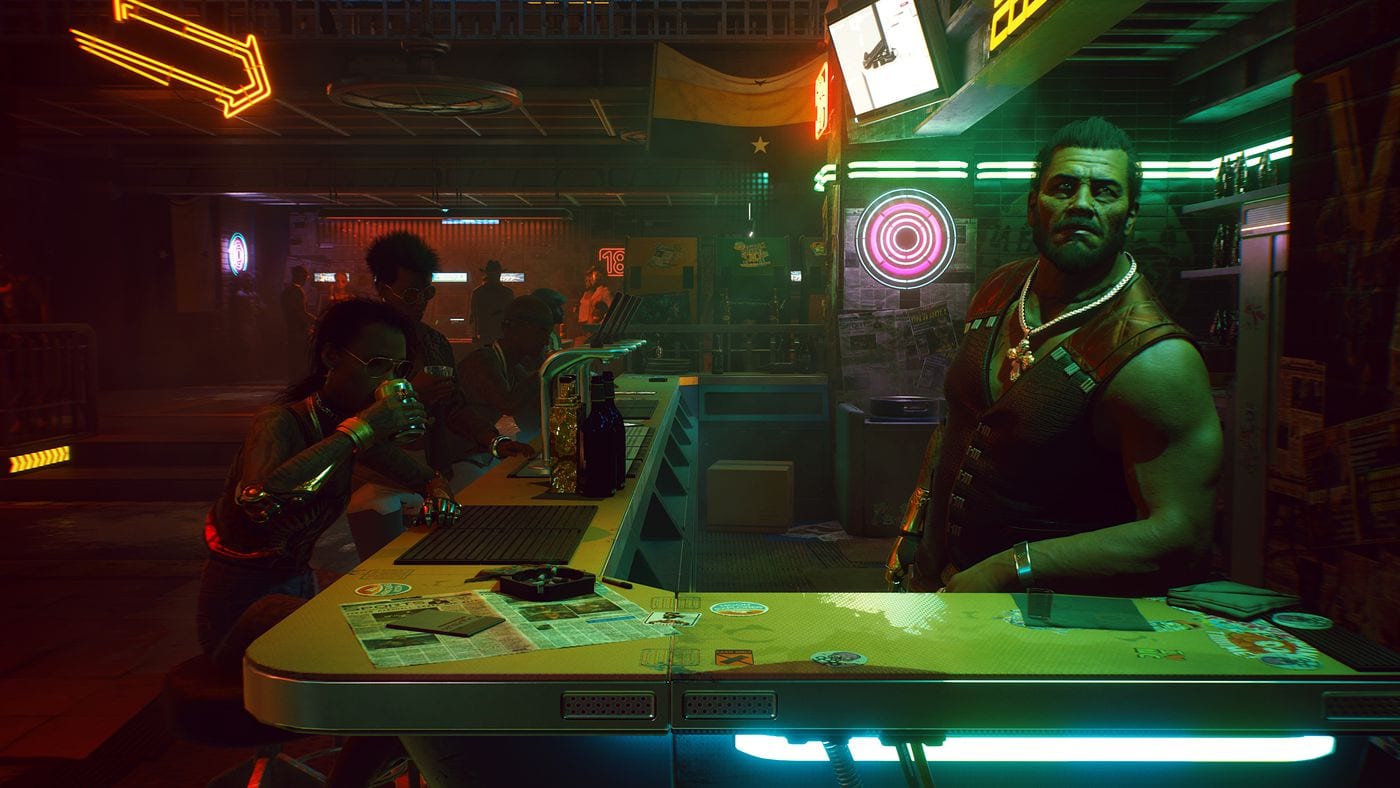
Melee
Melee, on the other hand, is not nearly as good. I got kind of hopeful for it in the VR tutorial at the beginning of the game. The sword slashes felt weighty, the parries were easy enough to nail and throw the game into a slick slow motion, and the blood effects are satisfying. The problem is the enemy behaviors during melee vs. melee combat, and I honestly didn’t really notice until I started working on the street boxing missions. The enemies appear to magnetize you in the middle of their attacks, which is weird, but might have been okay if you had similar leeway. But it appears that you need to land your attacks quite specifically. You also can’t block or parry if you’re out of stamina, so if you run out, you’re forced to run or dash away and let it recover. Considering the opponents in the boxing matches have insane health and do a lot of damage, the result is that you find yourself chipping away at an enemy’s health, needing to land approximately 100 hits to win, and if you miss one parry or dodge into a corner as an enemy is locking on with their bullshit magnet attack, it’s game over. It was frustrating to the point that I gave up on the street boxing missions after two opponents, hoping to come back when I’d over-leveled the others… but then the game ended.
Blade combat is quite a bit better. There is one challenging boss fight in the middle of the game, which, from what I could tell, forces you to swap between sword and gun combat, and it was quite memorable. Once you acquire the Mantis Blade cyberware, things get a lot more interesting, too, as you have a permanent blade weapon equipped and can do cool executions with it. It was so much fun that my last few perk points were all spent on buffing the blade bleeding damage, even though I avoided melee combat for most of the game.

Hacking
I didn’t invest much into hacking until later in the game, when I thought having some more options at my disposal would help. While it is possible to hack some environmental elements like cameras, turrets, or mundane electronics that will simply react, the meat of the hacking system is the combat quick hacks. Quick hacks work the way magic spells might in other role playing games. You have mana in the form of RAM and can pause the game, select a hack, and apply it to an enemy to blind them, short-circuit their cybernetics to cause damage, use them as a radar ping to reveal other enemy positions, or, at higher levels, force them to commit suicide. Hacking was fun, and on my next playthrough, I plan to invest in it more heavily. As of now, I don’t have a thorough understanding of the system depth, so I can’t speak on it in too much detail. Reboot Optics certainly came in handy both during stealth and to buy me a bit of time during some of the more intense gun battles, though.

Stealth
Sadly, the stealth itself is bad. It’s not ineffective, and sometimes it’s the best effective way to get through a mission, but the gameplay systems are, at most, half-cooked. The biggest offender is that, once an alert phase hits, there doesn’t even seem to be a small grace window in which you can stop it. If you’re sneaking up on an enemy, they turn around at the last second and spot you. You can’t grab them. You can’t quickly kill them. You’re just spotted, and the enemies at the other part of the building know it. They’re a hive mind, like the Borg, which isn’t explained in the lore either. The stealth AI is just very simplistic.
This favors the player and somewhat balances out the terrible alert phase system because the detection takes a while. You can walk in full view of an enemy and a vision meter will fill. If you break line of sight, the meter goes back down. There are even perks you can take to make the meter fill more slowly, so stealth is a viable option; it just feels super video game-y and isn’t very immersive. That being said, I hardly put any points into the cool stat and only ever used stealth when it appeared to be the only option. Perhaps if I created a stealth build, I’d have a better time with it, but from what I played, it was very rudimentary stealth.
There’s also a system for hiding bodies, which seems underdeveloped as well. If you successfully stealth grab an enemy, you can kill or choke them out and either leave them in the open or stash them in a crate. I couldn’t tell if dragging an enemy to a discreet location had affected body discovery, and that isn’t communicated clearly. The result is that it feels like you can either find a body box or not; there isn’t a lot of nuance or subtlety to it. You also have the option of throwing an enemy directly into the body boxes, but that removes your ability to loot the body.
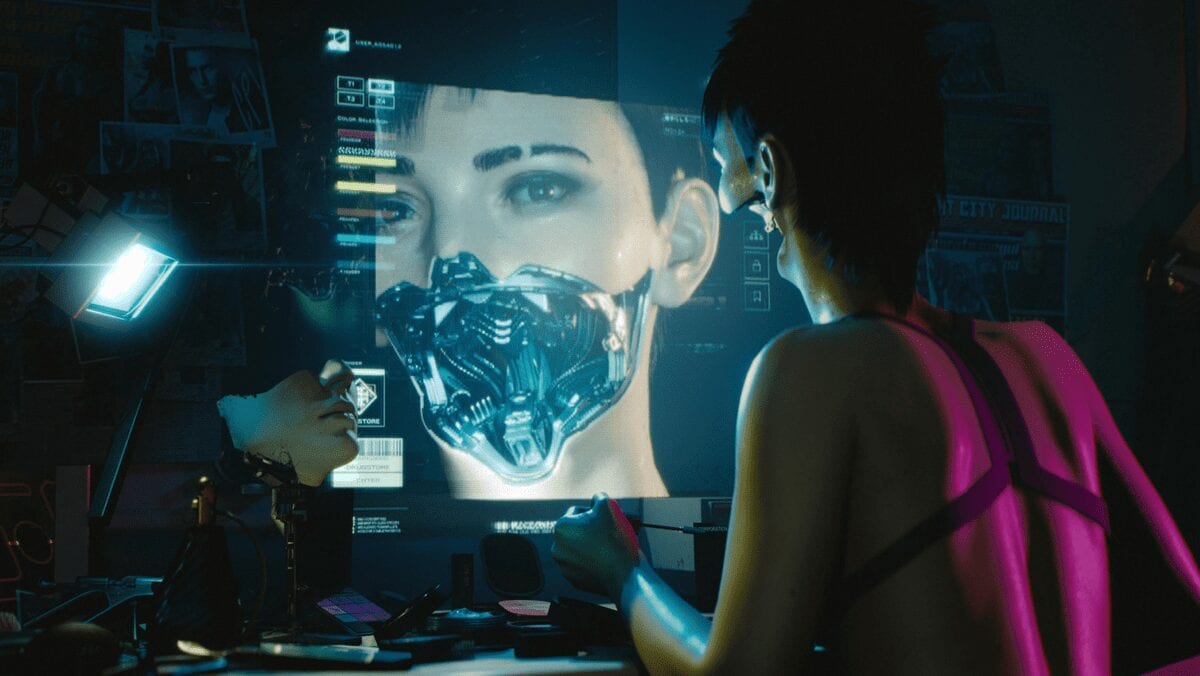
Loot/Economy
Speaking of loot, there is a lot of it in Cyberpunk 2077, to the point that I think the groundwork might be being laid for Cyberpunk’s planned multiplayer mode to compete with games like Destiny or The Division. All the looter shooter staples are here – gun models with unique stats, rarity tiers, the ability to add mods, pretty much everything you’d be expecting from The Division 3. There are also unique weapons that you gain from quests, like the aforementioned Malorian or my girl Lizzie. These felt special, so I tended to stick to the unique items and upgrade them instead of constantly swapping to new guns with higher damage values.
And that’s the aspect which seemed strange to me. There is a solid crafting/upgrade system, but I only found it necessary to use in two situations. The first is when I wanted to make the Malorian even more badass than it started by using components to upgrade its stats across the board. The second is when I was running low on healing items and found I could just burn common crafting components to make them myself. I’m certain at some point there will be quests in which you need to track down legendary weapon blueprints and will then need to craft them, similar to the Witcher armor in Witcher 3, but I couldn’t seem to find anything like that in the game right now, so the weapon crafting didn’t feel very worthwhile.
The biggest way the looting factored into my playthrough, particularly once I had a solid set of weapons I wanted to stick with, was to fuel the in-game economy. I would do my best to pick up every weapon and item an enemy would drop, up to the point of over-encumbrance, so I could bring them to a vendor and sell them, or break them down for crafting components. Getting creative with the economy was necessary because things in Night City are expensive. I’m back and forth on whether or not this was a good idea, as it certainly made it feel earned when I made the money to buy my double jump, my Kusinagi bike, or my Avenger, but in the case of the cyberware specifically, it locked gameplay-improving mechanics behind extremely high price tags. I think this could’ve been improved by having more side jobs or gigs tied into cyberware upgrades, the way the Smart Gun link tattoo was, but that criticism might be down to taste more than being an objective issue. The traversal got a lot more fun when I acquired the double-jump, to the point that I would strongly recommend grinding it out by doing gigs early on. I wish I had, as I got it pretty late.
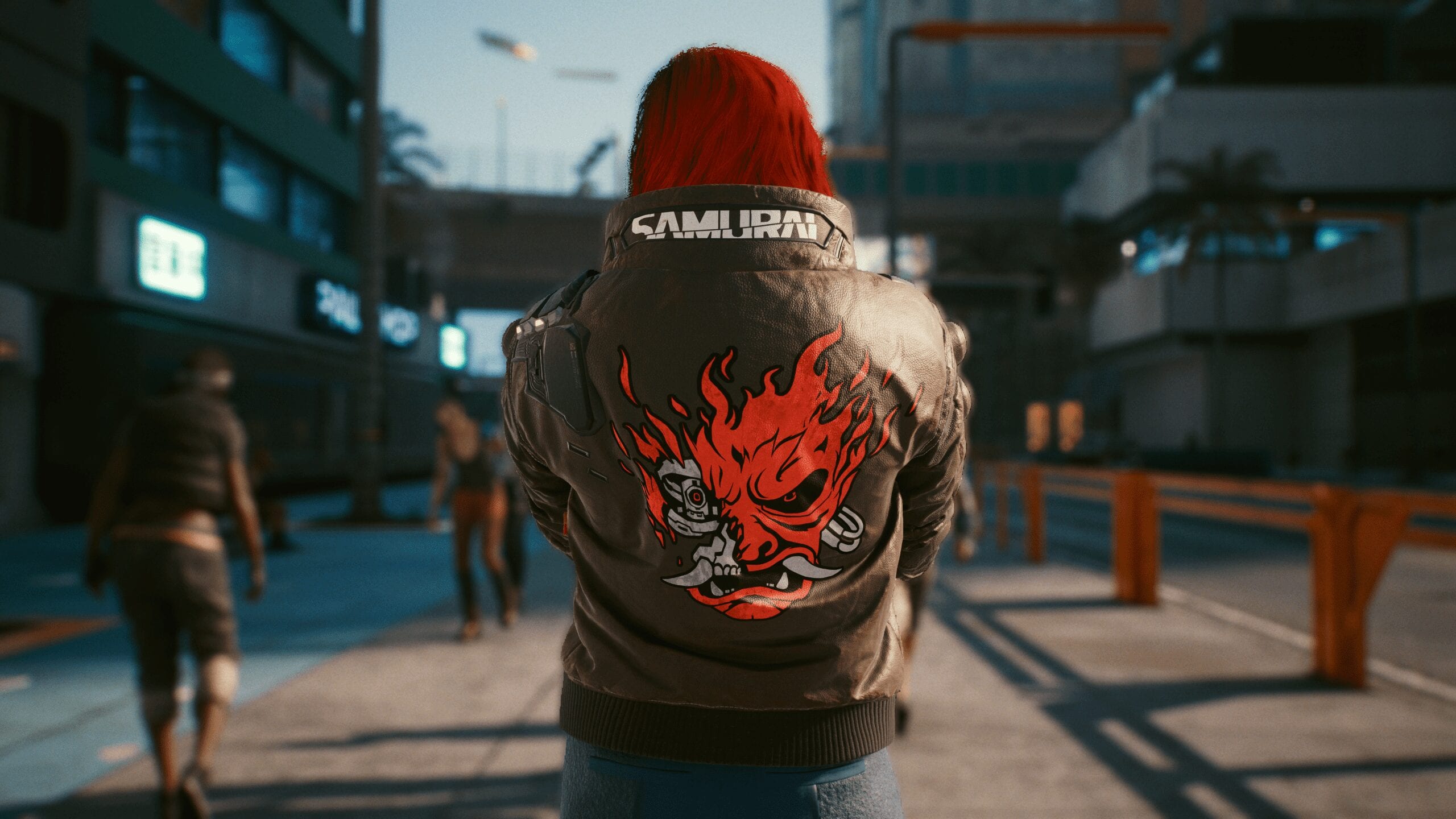
Role Playing
Alright, now that we’ve gone over the combat mechanics, structure, and gameplay systems, it’s time to tackle the role-playing aspects of Cyberpunk 2077. Once again, being an adaptation of a pen and paper RPG, many might expect these aspects to be well-developed and flexible, as CD Projekt’s prerelease marketing seemed to indicate nearly limitless possibilities. I’m sad to say that this isn’t exactly the case. You can’t do things like create a charisma build and talk your way around situations, nor can you go full Netrunner and just hack everything without firing a shot or throwing a punch. V being a mercenary is inherent to the story. You can’t just decide to leave the Afterlife club, not take mercenary work, join a gang, open a shop, or just live your life in Night City. It’s not nearly that flexible.
As much as you can shade and flavor V to become your V, the character is not YOU; it’s V – similar to how Geralt of Rivia was a set character, despite the fact that you could choose to make him more or less of a dick through your dialogue choices. I know this isn’t what a lot of people, or even I, was expecting, but it works pretty well in that it helps the storytelling feel more focused. It would’ve been nice if the effect your Life Path choice and your build had on skill checks made a bigger difference, as they don’t seem to do a whole lot beyond letting you save a bit of money or open a door more easily, but the storytelling does manage to make up for this shortcoming.
That being said, if you want a flexible RPG where your choices have major impact on how events play out, Wasteland 3 or even the early access version of Baldur’s Gate 3 would probably be better places to look than Cyberpunk 2077. During conversations, you have yellow options and blue options. The yellow options push the conversation forward and represent actual choices, and the blue options help you get more information and are optional. One thing I do really like is that it’s never clear if you’re making “the good choice, the bad choice, or the neutral choice,” and you often won’t know if you’ve made the choice that supports your desired outcome until later on. This forces you to make the choice you think will be the best one, based on what you know AROUND this issue at hand, instead of acting as a hand of God pushing the story toward a specific outcome. It’s a subtle feature, but one that makes the dialogue choices feel more engaging than “I’m just going to pick the good guy option every time.”

Story/Choice
The real strength of Cyberpunk 2077 is the storytelling. I say the storytelling specifically, not simply the story, because it’s not just the main story that is strong. I would argue the main story IS strong, but it is relatively straightforward and probably won’t knock your socks off. But there are several other stories that happen in tandem with the main plot. They weave in and out, and I think that – due to the data CDPR got on people falling off Witcher 3 before finishing the main story – they decided to segment a lot of this content into dedicated side job quest lines.
Do not skip these quest lines.
I’m going to veer into spoiler territory here, but I will not discuss the endings to any quest lines, and you may choose different things than I did, so “spoilers” has an asterisk in this case.
*POTENTIAL SPOILERS*
The main quest, which begins at the end of act 1, involves the consciousness engram, which is basically a digital ghost of Keanu Reeves’ Johnny Silverhand character, stuck in V’s head. Johnny is overwriting V’s mind against his will, so the main premise is that the two of them are teaming up to save V’s life. I loved how simple this premise was. It’s not the fate of the world or the fate of Night City you’re fighting for; just the fight for your own mind. Over the course of this story, you cross paths with characters like Johnny’s old guitar player Kerry, detective River Ward, street-racing bartender Claire, the prerelease fan-favorite Waifu Judy, and the actual Best Girl of the game Panam Palmer. Each of them also has a detailed, multi-phase quest line, so you’ll find yourself taking time from pursuing a main objective to, say, help River Ward rescue his kidnapped nephew. I felt invested in each of these storylines and was gladly prioritizing them over the main story at times – not just for the purpose of a thorough review playthrough. The writing of these stories was top-tier, and I was compelled to finish them before moving the main story along. All of them have the secondary effect of teaching you more about the lore of Night City, with you encountering several different factions and gangs, learning bits and pieces of what their goals and philosophies are.
This storytelling is reinforced by some phenomenal performances. My V was male, and I liked his snarky tone; he kind of reminded me of ItsAGundam… if Papa Gundam we’re a badass cyborg mercenary with a slightly deeper voice. Keanu Reeves absolutely nails Johnny Silverhand, even if that isn’t immediately apparent. Reeves sounds a bit monotone and dry, but that has a purpose and a solid benefit, in that it gives Johnny a very specific and noticeable way of speaking. There are moments in the game where Johnny takes over and V “hands him the wheel,” and during these moments, V speaks the way Johnny speaks. Because of how distinct Johnny’s way of speaking is, it becomes apparent that V’s voice actor is playing Johnny in these moments. It’s also pretty cool to see Johnny as a vicous asshole for the first few sequences he’s in, only for him to eventually warm to and sympathize with V, which turns it into something of a buddy cop relationship.
Reeves may be the biggest name, but he’s far from the only good performance. In fact, the standard is so high across the board that I can’t identify a weak link. I was a bit worried about the Jali technology, which procedurally generates facial performances and lip-syncing. I thought it might make everything look weird and the performances seem robotic. But it works very well the vast majority of the time. The story content and performances are the highlights of the game, and whatever other issues Cyberpunk 2077 has, CD Projekt nailed the thing that made Witcher 3 incredible and which so many other AAA devs drop the ball on: the writing is actually good.

Technical
From a technical standpoint, Cyberpunk 2077 is all over the map. I’ll get it out of the way and just say that the music is fantastic. They contracted a whole bunch of original songs, and the score is just awesome. The sound design is solid too. As far as the visuals go, core design – from art direction, to polygon counts, ray tracing features, and DLSS integration – are incredible, but the optimization leaves a bit to be desired. I was getting an average of 80-120fps on mixed high-ultra settings at 1440p, with ray-traced lighting and reflections on, ray-traced shadows off, and DLSS on performance mode. But my editing rig is running an RTX 3090, so I don’t imagine my experience is common. Even then, areas like Jig Jig Street would inexplicably dip to below 60fps. Xray Girl is playing in 1080p, on medium settings with ray-tracing off on a GTX 1080ti, and her experience has been quite solid at 100fps, so you don’t need a rig as high-end as mine to have the game run well, but you may have to be mindful of Icarus choices. You might not want to knock the settings down, but to have a smooth experience you may have to.
The good news is, over time, the optimization will improve, and, similar to Witcher 3, the settings will have room to climb over the next several years as new technology comes out. Also, I fired it up on my HDR TV for a test and, while I hardly ever play in HDR because it makes the footage capture look washed-out and horrible, the lights of Night City, or even things like the sunset, look stunning. I felt like Roy from Blade Runner, knowing that the technology doesn’t exist for me to share what I was seeing with you-,and that all I’d have to accompany the sentiment is a terrible-looking, washed-out, grey image.
Being on a console is a different story. I fired the game up on my Xbox One X, and, at first, I found it disorienting and almost headache-inducing. Part of it may have been the jump to 30fps from my much better frame rates on PC, but I found that once I turned the motion blur off in the settings menu, things improved quite a bit. I do not have a base-level Xbox to test it on, but from what I have researched and seen, you should absolutely not buy this game on the base level platforms. But if you’re okay with 30fps, the Xbox One X version is playable, if not ideal. I would personally recommend waiting on this game until you have access to the new consoles, though, even if that’s a year or two from now when the prices drop. The game will be cheaper at that time, and many patches will have arrived.

Bugs/Conclusion
And now… the bugs.
There are currently a lot of bugs in Cyberpunk 2077. Most of the ones I encountered ranged from minor to funny, though on the first night, I did have a series of program crashes when reloading save files after death. Since that first night, I have not had any crashes, but CDPR launching the game in the state they did is still not acceptable. Not even factoring in the catastrophic console launches, it’s undeniable that CDPR had one chance to make a first impression with this game and totally botched it. This was likely done in an effort to push the game out before Christmas or to mitigate the backlash they’d be getting for another delay, but it was the wrong move. I hope that in the new year, CDPR continues to fix the problems and maybe even double down on their consumer-friendly elements because they went from being the chosen one to a company that is fast growing a reputation for being liars.
I still think anyone saying “they’re no different than any other game company” is inaccurate, as their DRM free store, GOG, is the only service in the industry that sells you digital games that you actually own, but they need to make some moves to get that reputation back. And if the return policies of PlayStation Network and the Xbox Store are causing you issues, the GOG return policy is 30 days, with no restriction on playtime. So even if you were burned by CDPR and want a refund, it’s worth noting that the only store they have control over has a fantastic refund policy and should still be used as the example other companies should be held to. I’m not excusing the bad things CDPR has done, but ignoring the good things they do is a disingenuous, emotional reaction, not an honest assessment of what kind of company they are. The first order of business for them will be fixing the bugs, glitches, and optimization issues across all versions of Cyberpunk 2077.
Verdict: Good
It’s a real shame because, despite all those issues, there is a phenomenal game under there. Yet, despite my love for the incredible content, I would not recommend buying Cyberpunk 2077 at this time. You will probably have a great time if you’ve got a capable PC or a next-gen console, but you’ll undoubtedly have a better time in a few months when some updates have been applied and problems have been fixed. And CDPR, if any of you are reading this right now, all is not lost. You CAN fix this situation, but it’s going to take a lot of work. I believe in you, but a lot of others do not. And it’s not me who you have to convince; it’s them.
Comments (5)
Good is a fine way to describe the game. It isn’t bad but isn’t amazing either. At times it really shines and at others it just falls apart. This could have been a Tell Tale game.

I was expecting the game of the decade, that was my mistake. It ended up being just another game full of bugs but with a good design team, good open world and decent story. Finished and deleted it. Not sure if I’m going to bother install it again when the DLC’s are launched.

I think I’m going to sit back and wait 6 months to a year
let them fix the bugs and maybe release some DLC and then I’ll dive back into this game!

I Love this game,, being on PC I have had very few issues. The game does Graphically leave other games far behind along some aspects of in game stuff.
The LI’s are amazing BUT they do suffer once the culmination of said romance path hits peak as you dont Really talk or anything until after Hanako. And you SHOULD be able to use said digs as your own and Sleep(well after fun) together. But this is all lacking.. They really do need a nice BIG update. to make this game as good as near promise.

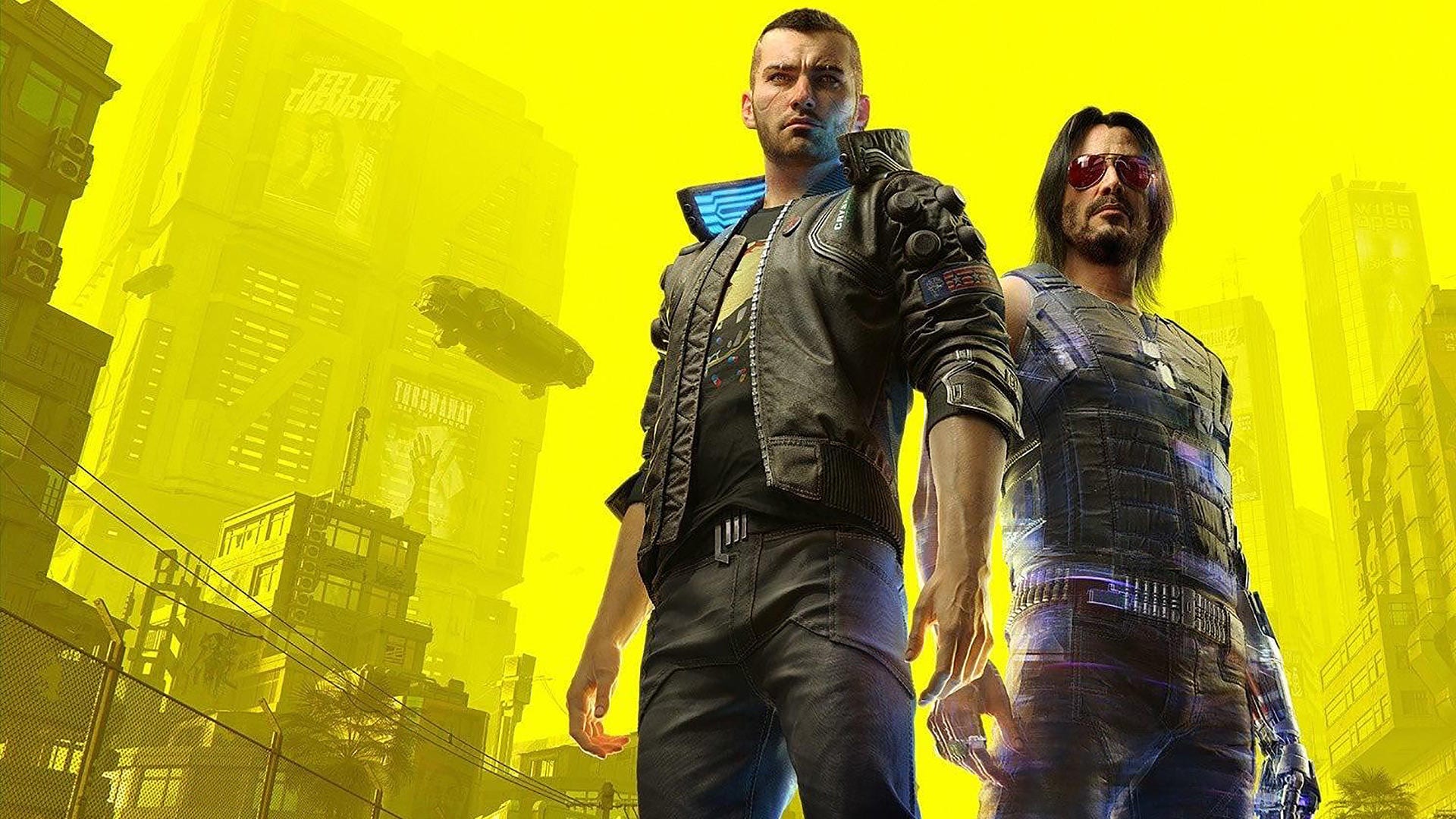






There was big expectations for this game